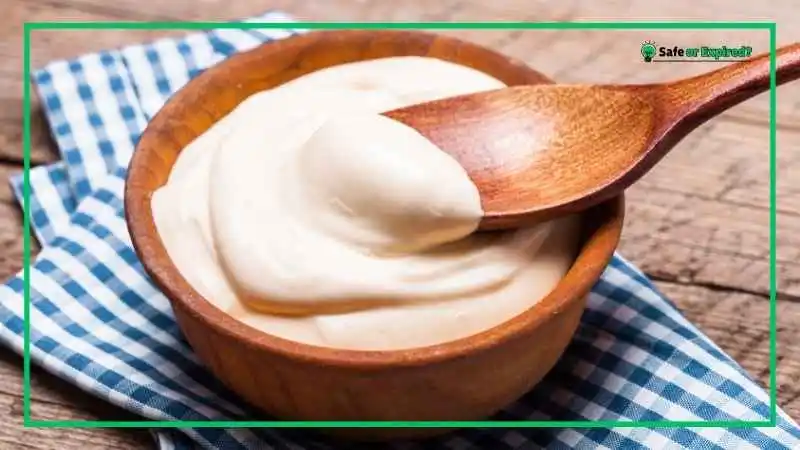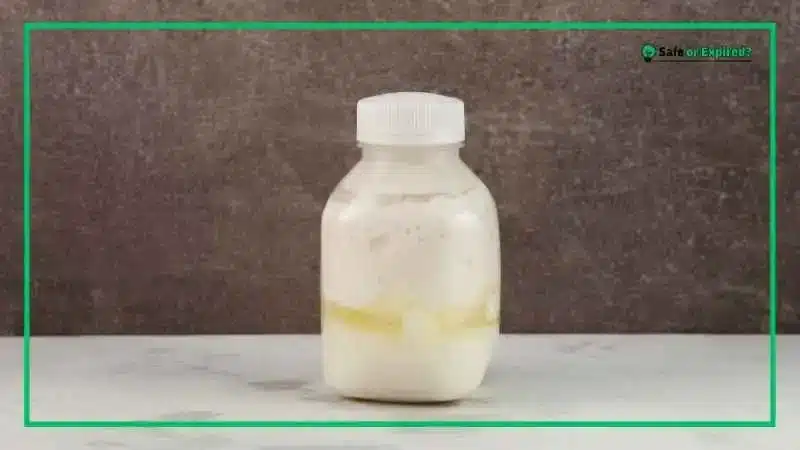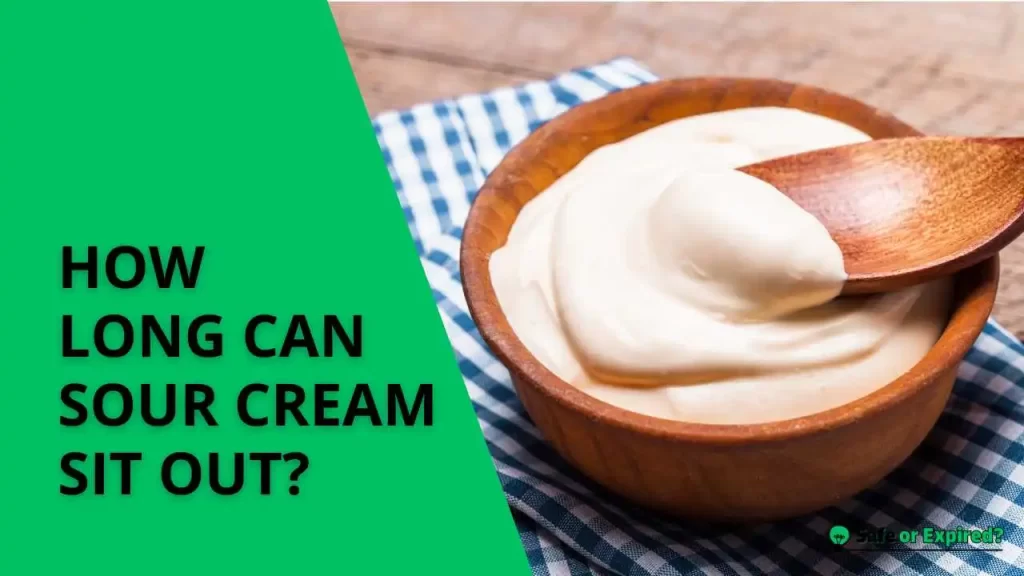“How long can sour cream sit out?” is a popular topic in food preservation books. Well, the answer is sour cream should not sit out for more than two hours to prevent spoilage. But what happened after that, and what are the signs of spoilage? Keep reading to know everything, including tips on storing sour cream to keep it delicious!
How Long Can Sour Cream Sit Out? All the Details
Sour cream can spoil quickly if left out at room temperature. The general guideline is that sour cream should not sit out for more than two hours. Bacteria can grow rapidly in sour cream when you keep it in the temperature danger zone (40°F – 140°F). Unfortunately, this can lead to foodborne illnesses.
So, always refrigerate sour cream promptly to ensure its safety and to extend its shelf life.
Let’s answer some common sour cream’s shelf life questions.
How Long Can Sour Cream Sit Out Overnight?
If unopened sour cream is left out overnight, it is generally unsafe to consume. Leaving sour cream at room or normal temperature for extended periods lets pathogens, like bacteria to multiply rapidly. This increases the risk of foodborne illness.
Even if it is unopened, the protective seal cannot prevent bacteria growth when exposed to warm temperatures for too long. Therefore, sour cream left out overnight should be discarded to avoid health risks.
How Long Can Sour Cream Sit Out in the Fridge?
When stored in the refrigerator, sour cream has a longer shelf life. Unopened sour cream can stay good for up to two to three weeks past the expiration date. Once opened, sour cream should be consumed within one to two weeks for the best quality and safety.
Always keep sour cream tightly sealed and stored in the coldest part of the fridge to maximize its freshness and prevent spoilage.
To sum up, here’s a table on the shelf life of sour cream:
| Opened | Un-Opened | |
| Counter | 2 hours | 2 hours |
| Fridge | 1-2 weeks | 2-3 weeks |
| Freezer | 1-2 months | 3-6 months |
Is Sour Cream Left Out for 4 Hours Okay?
Sour cream left out for four hours is not safe to consume. The USDA Guidelines state that perishable food, including dairy products like sour cream, should not be left out at room temperature for more than two hours.
After this period, bacteria such as Staphylococcus aureus can grow to dangerous levels, potentially causing foodborne illness. Therefore, it is best to discard sour cream that has been left out for four hours or more to avoid any health risks.
Can Sour Cream Be Left Out for 3 Hours?
Sour cream left out for three hours is pushing the safety limit. According to food safety guidelines, sour cream should not sit at room temperature for more than two hours. After this time, the risk of harmful bacterial growth increases significantly.
While it might still appear and smell fine, consuming sour cream that has been left out for three hours can pose a health risk. It is safer to discard it and avoid the potential for foodborne illness.
How Long Can Cream Cheese Sit Out?
Cream cheese, like sour cream, is a perishable dairy product. It should not be left out at room temperature for more than two hours. Beyond this time frame, bacteria can multiply quickly, increasing the risk of foodborne illness.
For the best safety practices, always refrigerate cream cheese promptly after use. If cream cheese has been left out for more than two hours, it should be discarded to ensure food safety.
What Are the Signs That Sour Cream Has Gone Bad?
To tell if sour cream has gone bad, check for these signs: a sour or rancid smell, visible mold, a change in texture, discoloration, and an off taste. If you notice any of these spoilage signs, it’s best to discard the sour cream.
Sour or Rancid Smell
A strong, sour, or rancid smell is one of the first signs that sour cream has gone bad. Fresh sour cream has a tangy, mild scent. When it spoils, bacteria and mold can cause it to emit a foul odor.
If you open the container and are greeted by an unpleasant smell, it’s a clear signal that the sour cream is no longer safe to eat. Always trust your nose; if it smells off, it probably is.
Visible Mold
Seeing mold on your sour cream is a definite sign that it’s spoiled. Mold can appear as blue, green, or white fuzzy spots on the surface. Even if you scrape off the moldy part, it’s not safe to eat because the mold spores can spread throughout the container.
Consuming moldy sour cream can lead to food poisoning and other health issues.
Change in Texture
A change in texture is another indication that sour cream has gone bad. Mark my words – Fresh sour cream should be creamy. If it becomes watery, curdled, or clumpy, it’s a sign that it’s starting to spoil.
The separation of liquid from the solid part indicates bacterial growth and should not be ignored. If your sour cream looks different from when you first bought it, it’s best to throw it out to stay safe.
Here’s a picture of top-quality sour cream:

Discoloration
Discoloration is a visible sign that sour cream is no longer good. Fresh sour cream is usually white or pale cream in color. If you notice any yellow, pink, or greenish tints, it’s a sign of spoilage. These color changes are often due to bacterial or mold growth.
Eating discolored sour cream can cause foodborne illnesses, so it’s better to discard it if you notice any unusual colors.
Off Taste
An off-taste is a final confirmation that sour cream has spoiled. If you’ve checked the smell, texture, and appearance but are still unsure, a small taste test can help. Spoiled sour cream will taste tangy or bitter, quite different from its usual mild and slightly tangy flavor.
However, tasting should be your last resort because consuming even a small amount of spoiled sour cream can make you sick. If in doubt, it’s safer to throw it away.
How to Properly Store Sour Cream to Maximize Freshness?
To keep sour cream fresh, store it in the fridge at 40°F or below, tightly seal the container, avoid cross-contamination, and never leave it out for more than two hours.
Keep It Refrigerated
Always keep your sour cream in the refrigerator. It should be stored at a temperature of 40°F or below. This prevents any bacterial growth and keeps your sour cream fresh for a longer time.
Remember to put it back in the fridge immediately after each use. Leaving it out, even for short periods, can cause it to spoil faster.
Seal the Container Tightly

After using sour cream, make sure the container is sealed tightly before putting it back in the fridge. A tight seal prevents air and moisture from getting in, which can cause spoilage.
If the original lid doesn’t fit well, consider transferring the sour cream to an airtight container.
Store in the Coldest Part of the Fridge
Place the sour cream in the coldest part of your refrigerator, usually the back of a middle shelf. Avoid storing it in the refrigerator door. Why? Well, temperatures fluctuate every time the door is opened. Consistent cold temperatures help maintain the quality and safety of the sour cream.
Use a Clean Spoon
Introducing food particles or bacteria from a used spoon can lead to contamination and spoilage. Make it a habit to grab a fresh spoon each time you serve sour cream to keep it safe and delicious.
Avoid Double-Dipping
Double-dipping is a common way to introduce bacteria into sour cream. It’s important to use a spoon to transfer the amount you need to a separate dish rather than eating directly from the container. This simple practice helps maintain the sour cream’s freshness and prevents cross-contamination.
Check Expiration Dates
Always pay attention to the printed expiration dates on the sour cream container. Use it before the date passes to ensure the best quality. While sour cream might still be safe to eat shortly after its expiration date, its taste and texture can deteriorate.
Keeping track of these dates helps you use the product at its peak freshness.
Keep Away from Strong Odors
Sour cream can absorb strong odors from other foods in your refrigerator. To prevent this, store it away from foods with strong smells, like onions or garlic.
Store Upside Down
A handy trick to extend the shelf life of sour cream is to store the container upside down. This creates a vacuum seal, which helps to keep bacteria and mold at bay. Just be sure the lid is tightly sealed to prevent leaks.
Do Not Freeze
Freezing sour cream can alter its texture, making it grainy and less appealing when thawed. While it’s safe to freeze, it’s best to avoid doing so if you plan to use it as a topping or in recipes where texture is important. Stick to refrigerating it for the best results.
Use Sour Cream Quickly
Try to use sour cream within a week or two of opening it. The longer it sits in your fridge, the more likely it is to spoil. Plan your meals to include sour cream within this timeframe to ensure you’re enjoying it at its best.
Label the Container
If you transfer sour cream to another container, make sure to label it with the date you opened it. This helps you keep track of how long it has been in the fridge and ensures you use it before it goes bad. Clear labeling is a simple yet effective way to manage your food’s freshness.
Keep It Dry
Moisture can cause sour cream to spoil faster. After each use, wipe the rim of the container to remove any residue and moisture before sealing it. Keeping the container clean and dry helps prevent mold and bacteria growth, ensuring your sour cream stays fresh longer.
Conclusion
All in all, to ensure your sour cream stays safe to eat, remember these key points:
- Sour cream should not sit out for more than two hours.
- Always store sour cream in the refrigerator at 40°F or below.
- Seal the container tightly to maintain its quality.
- Use clean utensils to avoid contamination.
- Check the expiration date and consume it promptly.
With these guidelines, you can enjoy fresh and tasty sour cream without any worries.

